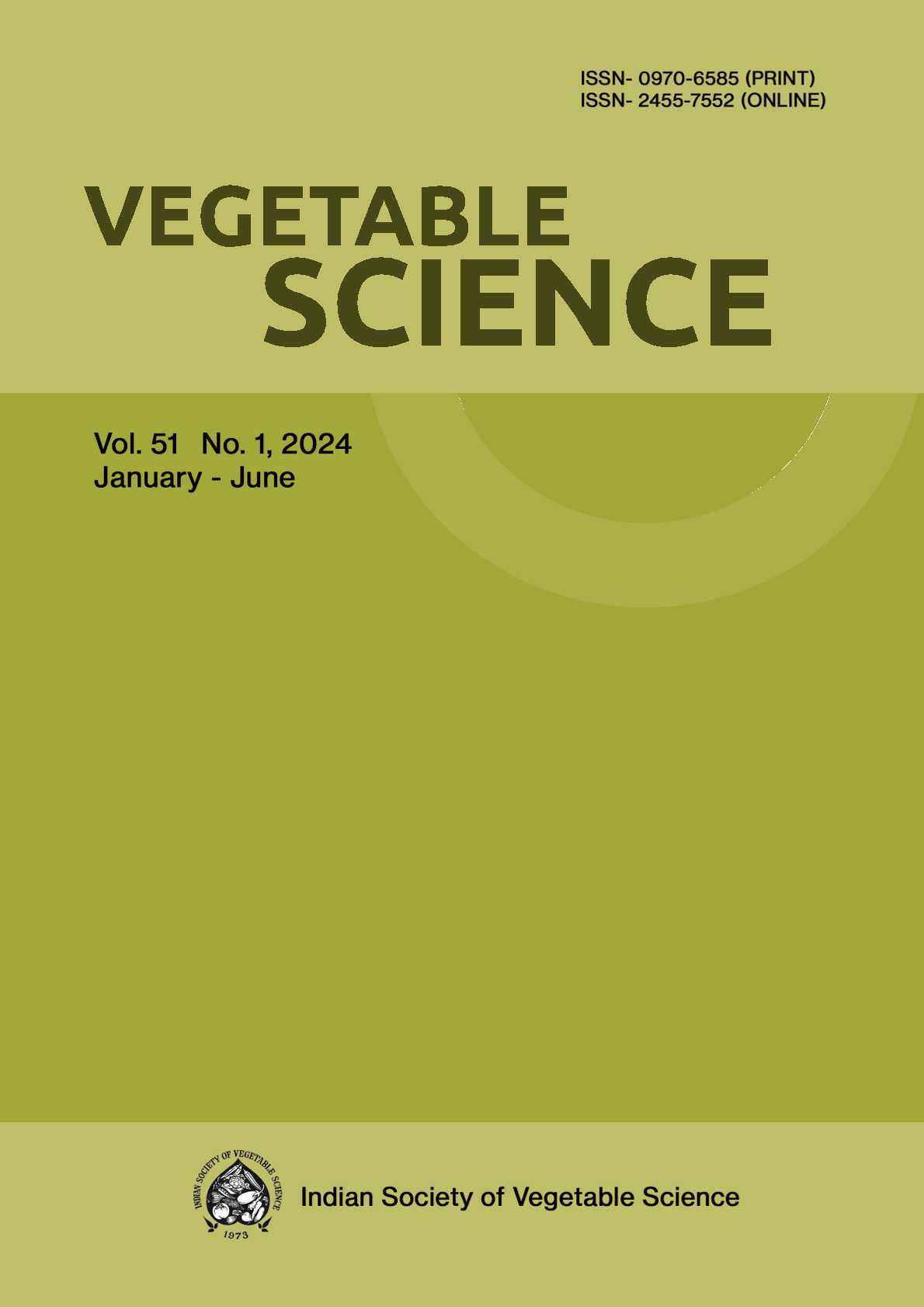Generation mean analysis unveils genetic effects controlling major yield traits in okra [Abelmoschus esculentus (L.) Moench].
DOI:
https://doi.org/10.61180/vegsci.2021.v48.i2.06Keywords:
Generation mean, Gene action, Scaling test, Yield traits, OkraAbstract
The present study on generation means analysis was carried
out to uncover genetics of yield traits in okra. To determine
the nature and magnitude of gene action six generations
(P1, P2, F1, F2, BC1 and BC2) of cross Pusa Sawani x Pusa
Bhindi- 5 was assessed. The results revealed that both
additive and dominance gene effects were significant in
genetic control of yield traits. However, the magnitude of
dominance gene effects was significant and higher for seed
germination per cent, days to first flower, node to first flower,
number of fruiting nodes, plant height and fruit yield per
plant. Therefore, heterosis breeding would be effective to
improve these traits. Additive genetic effect was significant
for days to 50 per cent flower, inter-nodal length, number of
primary branches, fruit length, fruit diameter and fruit weight.
Result of scaling tests confirmed the role of non-allelic
interaction in genetic control of all the yield traits analysed.
The opposite sign of dominance (h) and dominance x
dominance interaction (l) for many yield traits suggested
role of duplicate type of epistasis, while few characters
exhibited complementary type of epistasis. For improving
traits with higher fixable (additive and additive x additive)
component of genetic variation, pedigree method of breeding
would be useful. For traits showing significant values of
both additive and non-additive gene effects, improvement
can be done by either recurrent selection or bi-parental
mating system in segregating generations followed by
selection.
Downloads
Published
Issue
Section
License

This work is licensed under a Creative Commons Attribution-NonCommercial-NoDerivatives 4.0 International License.






